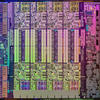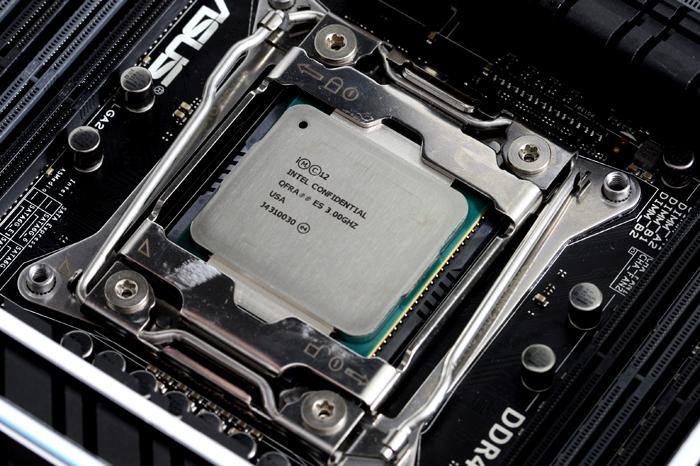Conclusion
Final Words & Conclusion
You know what, as expensive as the enthusiast space for PC components is, I just LOVE it. It's the same with the Core i7 5960X processor, money wise it'll be hard to defend, but let's be realistic here, everybody would like this processor in their ultimate gaming or content creation rig.
The Experience
Now realistically, if you would focus at per core processor performance then the performance remains roughly the same 'per core' opposed to Ivy-Bridge-E (Core i7 4960X), however you just gained two more cores with this processor and that just brings in a truckload of performance. Next to that, it isn't 'just' about the processor is it? The relevance of this release really is the launch of the entire platform, X99 just brings in a bucket-load of modern options like the many USB 3.0 ports, the plethora of SATA3 ports, inclusion of the M.2. PCI Express interface and SATA Express (albeit I do not foresee a big future for SATA Express). Combined with 40 PCIe gen 3.0 lanes you just have to admit that this is THE platform for the enthusiast user.
So we have to acknowledge that Intel's new eight-core processors are as fast as a lightning bolt, really, it's just seriously fast stuff and offers great fun for the enthusiast PC user. Now the other new 6-core models we did not receive just yet, but these might be a bit more troublesome given the fact that they hardly offer anything new in features and performance over the last gen products. That is something you will need to keep in mind if you are already on X79 and Core i7 49x0.
Overall Performance
The overall per-core performance remains seriously nice but is at the level of pretty much any previous Nehalem architecture based processor core, Turbo 2.0 kicks in nicely up-to 3.5 GHz per-core for the Core i7 5960X. For the professional user who uses heavily threaded software like content creation, that's where Haswell-E will make a nice difference. Additionally, quad-channel DDR4 memory will offer insane bandwidth and plenty of PCIe lanes and you'll have a platform that will be hard to beat. The Intel X99 chipset is by all means a huge plus, with this release you receive huge amounts of SATA3 and USB 3.0 ports among others. The motherboard manufacturers have gone to great length and offer the most luxurious products. It is a feast to the eyes to see and experience really. Performance wise, for content creation this is the processor to get. For gamers it offers very high-end performance, but performance wise a fast Z97 / Core i7 47x0 processor with DDR3 memory will offer you roughly the same performance. Games do not really require a CPU with 8-cores and given the fact that the clock frequencies on the quad-core processors can be higher, the performance in certain scenarios will even benefit the quad-cores over 6 and 8-cores. It's close though and if you plan to build an enthusiast class 8-core platform that must last you the next five years, I would recommend the X99 / Core i7 5960X. But then again, there's budget we need to take into consideration as well.
Overclocking & tweaking
You know, the 6-core parts will definitely clock higher opposed to the 8-core model we tested today. What we learned was that we have received a pretty bad overclocker - LOL. Realistically at 1.30 Volts you should be able to get the Core i7 5960X at roughly 4400 MHz on all cores. We need 1.40 Volts for that. And even though that seems a little shy, it remains to be 4400 MHz on 8 physical CPU cores, the performance is seriously grand. But at a recent ASUS session we have already seen some 8-core CPUs reach close to 5 GHz. That did require proper liquid cooling and close to 1.5 Volts. But hey, it is possible. As always you need a bit of luck as not one processor batch is the same.
Now, I heard from others that they have been able to reach 4.5GHz on all 8-cores with just a 1.25v Vcore. Some clock great on low voltages, others behave like pigs... in our case we needed 1.4 Volts to reach 4.4 GHz and have gotten a pig. Regardless, overclocking wise, you will have plenty of headroom to fool around with. It really is a fun processor to tweak.
Power Consumption
You know, I was expecting this 140 Watt TDP processor to be a power hog, but Intel's focus for the past three years has been making smaller fab processes with, in the end, more energy efficient products. Our platform as tested today is the most high-end enthusiast class consumer grade system available on the market. Yet with a dedicated graphics card (GeForce GTX 780 Ti) installed it idles at only 69 Watts. When we stress the processor we reach roughly 190 Watts. When we game we hover at 300 Watts. These are really good values with an 8-core product. Now, the processor might peak to 140 Watts, but the platform overall has become much more energy efficient. So much so that overall it consumes less power than the last generation Ivy-Bridge-E platform. Much of that has to do with a lot of the USB and SATA connectivity being moved into the PCH, whereas on X79 the motherboard manufacturers had to add many 3rd party chips for extra USB/SATA controllers. It is impressive to see. So this beastly PC remains very acceptable in terms of power consumption.
DDR4 memory
One of the bigger changes starting with Haswell-E is obviously DDR4 memory. DDR4 is received with some skepticism with its rather high latency. All I can say on the topic is that it is a necessary step to make. DDR4 is about lower voltages and higher frequencies. In the end one DIMM is not going to be massively faster than, say, a good DDR3 DIMM. But fabrication processes are slimming down, we can do more with less voltage. That helps with power consumption. In the end we have already had this platform at 3000 MHz on DDR4. Now that was with CL 15 latency, but in combo with quad-channel the memory performance at that point sits at 60GB/sec. It is impressive to observe. For gaming you will not notice huge performance improvements with that high memory bandwidth, but with content creation and video transcoding this kind of bandwidth certainly does make a difference. What does need to happen is that the prices will need to go down as four 4GB DIMMs will easily cost you 200 EURO for a 2133 MHz kit. The 3000 MHz kits will be anywhere from 250 to 300 EURO for 16GB. As always, my advice would be to go with lower clocked DDR4 memory with decent timings, and spend the rest on your graphics card if you are a gamer.
Final Words
The price / performance wise the winner of the three Haswell-E processors being announced today will be the Core i7 5820K. It has six cores, is unlocked, the 28 PCIe Lanes is a tiny bit of a bummer, but on X99 this processor is only going to cost you 389 USD! That one will be seriously interesting as it brings six-core Intel very close to the Core i7 4790K price wise.
The 5930K will be the tough one to sell, at 583 USD it is mereley a notch faster to the 5820K (and that one has an unlocked multiplier so you easily tweak that out). This biggest difference would be 40 PCIe lanes and we somehow doubt that warrants a 194 USD price difference.
But secretly today is all about that 8-core product, the Core i7 5960X. The processor is grand and majestic from every possible angle. The one thing you can argue is the price of course, but the top-end SKU from Intel has always hovered at the 1000 EURO/USD marker, and that is not any different with the Core i7 5960X. The 8 cores unleash a truckload of performance with fast per core performance up-to a Turbo frequency of 3.5 GHz per core. Obviously there is plenty of room left to tweak. Reaching 4 Ghz is not an issue, up-to 4.5 GHz will be more challenging, and above that it comes down to cooling and sheer luck. Now, the success of the Core i7 5960X processor does not lie within its 8 cores, it is the combination of the processor AND the X99 platform. X99 is a very mature chipset in terms of features. It has everything on-board that a true enthusiast PC aficionado requires. 40 PCI Express Gen 3.0 lanes for the hardcore multi-GPU discrete graphics solutions, 6 native USB 3.0 ports with another 8 native USB 2.0 ports supported, a grand 10 native SATA 3 ports, DDR4 memory up-to 128GB installed and then the fun begins as the motherboard manufacturers just keep on adding the good stuff. As a whole testing session, this entire platform from A to Z was such a fun experience, testing, tweaking it is all thrilling and exciting. And that's really what high-end gear is all about. Now there's a 'but' in this conclusion. If you are already on X79 with a 6-core Ivy-Bridge-E (4960X / 4830K), I do not see a significant enough reason for you to upgrade. The investment is too steep versus what you gain. However, stepping up from the good old Gulftown platform (Intel Core i7 980X) might finally make sense as not only do you gain two cores, the platform in its entirety will make a huge difference with all bells & whistles, slots and ports being up to snuff in terms of the latest performance.
Anyway, it is time to end this already way too long conclusion, we bow-chicka-wow-wow to the Core i7 5960X and X99. It's incredibly expensive as a platform to upgrade to, but it'll love you long time and as such is a fantastic investment in the long term. We grant the Core i7 5960X our best hardware award. And that Core i7 5820K is going to be an excellent alternative against the 4790K.
Check our other Haswell-E reviews:
- Core i7 5960X - 5930K and 5820K processor review
- MSI X99S Gaming 9 AC Motherboard Review
- ASUS X99 Deluxe Motherboard Review
- ASUS X99 Rampage V Extreme Review
- Gigabyte X99 SOC Force Motherboard Review
Handy related downloads:
- Sign up to receive a notice when we publish a new article
- Or go back to Guru3D's front page.
“A mind needs books as a sword needs a whetstone, if it is to keep its edge.”



